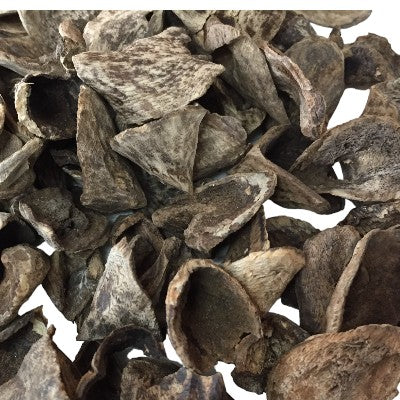Menu
-
-
F.A.Q
- How to identify genuine agarwood chip, natural or cultivated
- How to identify oil injection / absorption fake agarwood beads
- How to know if there are more than one oil in your oil
- How to make your wood bracelet or mala darker
- How to tell if an Agarwood bead sinks WITHOUT sinking it under water?
- How does back flow incense work and how do you burn it?
- Where to start if you don't know what agarwood is ?
- Why are you losing money if you buy seeds and plants?
- Which agarwood incense should I choose?
- Frequently Asked Questions
- Agarwood Related Articles
- Shipping
-
SHOP - Agarwood
-
SHOP - Other Fragrant Wood
-
SHOP - Incense Holder and Burner
-
- FREE Oud Oil guide
- Testimonials
- "Why did you buy this?"
- Contact us
- About Us
- +61430284329
- Login
-
English


Agarwood oil benefit - with proof
June 01, 2024 4 min read
In the verdant depths of our Agarwood plantation, where tranquillity speaks through the rustle of leaves and the whisper of the wind, grows a tree known as Aquilaria. This tree, unassuming in appearance, holds a secret treasure known as agarwood within its heartwood, cherished across civilisations for its rich, captivating fragrance and profound medicinal qualities.

Among the many compounds that imbue agarwood with its unique characteristics are the agarofurans—mysterious and potent molecules that emerge as the wood's silent protectors. When the Aquilaria tree is wounded or infected by microbial intruders, a transformative process begins. The tree, in its innate wisdom, produces resin imbued with agarofurans, including dihydroagarofuran and β-agarofuran, to seal its wounds and ward off further damage. This natural response not only heals the tree but also turns its heartwood into the highly prized agarwood.
Even better, there is another subclass of Agarwood, known as ‘Ky Nam’ ‘Kyara’, and 'Qi-Nan' (Yang et al., 2014; Fitriasari et al., 2021). This has a very different aroma compared to Agarwood. The uniqueness is the creamy, milky aroma.
Innovators and scientists, intrigued by the natural processes that enhance agarwood’s value, have discovered methods to replicate this resin formation artificially. By introducing mycotoxins from specific fungal species into the Aquilaria trees, they can stimulate the tree to produce more agarofurans, enhancing both the quantity and quality of the agarwood (Subasinghe et al., 2021).

The oil extracted from this resin-laden wood, rich in agarofurans, carries more than just a delightful fragrance; it is a beacon of health benefits. Agarwood oil has demonstrated promising potential in cancer therapy, particularly against prostate cancer, where it inhibits leucine transport in cancer cells, suggesting a role in stalling cancer's ability to thrive (Wibowo et al., 2017; Wibowo et al., 2016). Moreover, its antibacterial and antifungal properties make it a potent ally in fighting infections, and its neuroprotective effects offer hope for treating neurodegenerative diseases (Yeboah et al., 2010; Fu et al., 2019).

Thus, from the heart of nature to the heart of human civilisation, agarwood oil continues to be a source of mystery, luxury, and healing, weaving together the stories of nature's resilience and human ingenuity.
Agarofurans are classified as sesquiterpenes. Specifically, they belong to the dihydro-β-agarofuran type of sesquiterpenes, which are a structurally diverse class of natural products. These compounds have been identified in various plant species and exhibit a range of biological activities, including antiproliferative effects on certain human cancer cell lines (Garcia et al., 2013).
And Agarwood contains not only Agarofurans but other sesquiterpenes
Agarwood contains a rich variety of sesquiterpenes besides agarofurans, contributing to its distinct fragrance and therapeutic properties. Some of the notable sesquiterpenes found in agarwood include:
-
α-Guaiene and δ-Guaiene: These compounds are produced in response to methyl jasmonate treatment in cultured cells of Aquilaria, a key genus for agarwood production. δ-Guaiene, in particular, becomes the most abundant sesquiterpene after certain processing times (Kumeta & Ito, 2010).
- α-Humulene - Often contributes to the woody and spicy aroma notes in agarwood.
- β-Agarofuran - Contributes to the tree's healing process and to the aromatic complexity of agarwood.
- Selina-3,11-diene derivatives - Contribute to the odor profile with subtle nuances in agarwood's scent (Ishihara et al., 1991).
-
Eudesmane-type and Agarospirane-type Sesquiterpenes: These sesquiterpenes, isolated from Aquilaria agallocha, include compounds like agalleudesmanol A-I and agarospiranic aldehyde A-B. Some of these compounds have shown anti-inflammatory activities (Xie et al., 2021).
-
Gyrinops salicifolia-derived Sesquiterpenes: From this specific source of agarwood, new sesquiterpenoids were discovered, some of which have shown moderate acetylcholinesterase inhibitory activity, suggesting potential therapeutic uses (Shao et al., 2016).
These compounds are just a few examples of the complex chemical landscape of agarwood, highlighting its value not only in perfumery but also in pharmacological contexts.
Oud oils benefit: smell good and kills the bacteria too
Applying agarwood oil on the skin is a usual practice of many Oud lovers. But did you know this action may have several potential benefits, particularly regarding its anti-inflammatory and antimicrobial properties:
1. Anti-Inflammatory Activity: Agarwood oil has been shown to exhibit significant anti-inflammatory effects when applied topically. This is evident from studies where it reduced ear edema and lowered oxidative stress and pro-inflammatory cytokines in a mouse model. This supports the traditional use of agarwood oil to treat inflammation-related ailments, which can include various skin conditions like dermatitis or eczema (Yadav et al., 2013)
2. Antimicrobial Effects:Agarwood oil has also demonstrated antimicrobial activity against common skin pathogens, including bacteria and fungi. It can effectively inhibit the growth of Staphylococcus epidermidis, Staphylococcus aureus, Propionibacterium acnes (linked to acne), Candida albicans, and Trichophyton species (linked to fungal infections). This suggests that agarwood oil could be beneficial in treating or preventing skin infections and in promoting wound healing (Batubara et al., 2021)
3. Neuroprotective Effects: Some studies suggest that sesquiterpenes in agarwood may induce the expression of brain-derived neurotrophic factor (BDNF), which supports brain health and function (Ueda et al., 2006).
These properties make agarwood oil a promising candidate for use in skincare products, not only for its aromatic qualities but also for its therapeutic benefits in reducing inflammation and combating microbial infections on the skin.
Leave a comment
Comments will be approved before showing up.
Also in News

What is Tasbih? The Deep Meaning of Subhan Allah and the Role of Prayer Beads
November 09, 2025 4 min read
